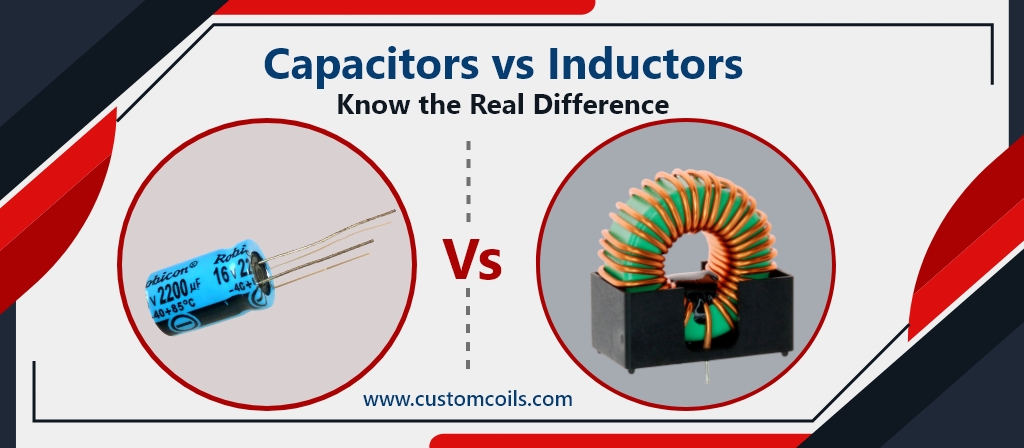Capacitors and inductors are commonly used in most electrical engineering and electronic systems. Both are passive elements and designed to store energy. Capacitors store energy in an electric field, while the inductors store energy in a magnetic field. Capacitors are crucial in voltage regulation, energy storage, and noise filtering. Thus, they find applications in audio systems, power supplies, and electronic devices, ensuring efficient signal integrity and power delivery. In contrast, indicators are essential in energy transfer, impedance matching, and filtering electromagnetic interference. Thus, they are used in power electronics, chokes, and transformers, allowing efficient power control and conversion. Irrespective of these factors, many of us find them similar due to their cylindrical shapes and connections. However, this is not the case. They have different characteristics and possess unique features that set them apart. Are you intrigued to know how capacitors are different from inductors? If yes, read this post to know more.

Capacitors vs Inductors – Know the Real Difference
There are some key factors that differentiate these two electronic components. These factors explore their behavior, construction, applications, and contribution to electronic systems.
- Construction and Function: Capacitors comprise two metallic plates separated by a dielectric material. These plates are made using various materials such as tantalum or aluminum. An electric field is created when voltage is applied across these plates. This causes the plates to store the energy in the form of an electric charge. Inductors have a coil of wire wound around a core material. When current passes through the coil, a magnetic field builds up that stores energy. This energy can be later used or transferred to other components within a circuit.
- Reactance and Impedance: Both capacitors and inductors react differently in terms of reactance and impedance. Capacitor’s capacitive reactance decreases as the frequencies increase. This enables capacitors to pass high-frequency signals while blocking low-frequency signals. On the other hand, inductors exhibit inductive reactance that increases with frequency. This allows inductors to impede high-frequency signals while also passing low-frequency signals.
- Energy Storage and Release: The primary function of a capacitor is to store and release electrical energy. This makes them suitable for applications demanding high-frequency switching and energy storage. On the other hand, indicators tend to resist changes in current and are utilized in applications requiring energy transfer, including energy conversion, motor control, and filtering.
- Time Constants and Response Time: Capacitors have a time constant. It is when the voltage is required across the capacitor to reach its final value during charging or discharging. This determines their response time and ability to smooth out voltage fluctuations. Inductors have the inductance time constant, which determines that the rate at which the current passes through it increases or decreases in response to the change in voltage.
- Applications and Uses: Capacitors are vital components of power supplies, electronic devices, and audio systems, while inductors find application in radio frequency circuits, power electronics, and so on.
You now have gained some knowledge about capacitors and inductors and their functioning. In-depth knowledge and understanding of these components is important for designing and analyzing complex electronic circuits, enabling designers and engineers to leverage their unique properties to optimize overall functionality and performance of the device. If you need inductors for your next electronics application make sure you source them from a reliable and experienced player. Custom Coils stands tall among its other competitors. Inductors offered at Custom Coils can meet a wide range of application needs and perform well in varied operating temperatures ranges. Contact the team at Custom Coils today to discuss your requirements.

